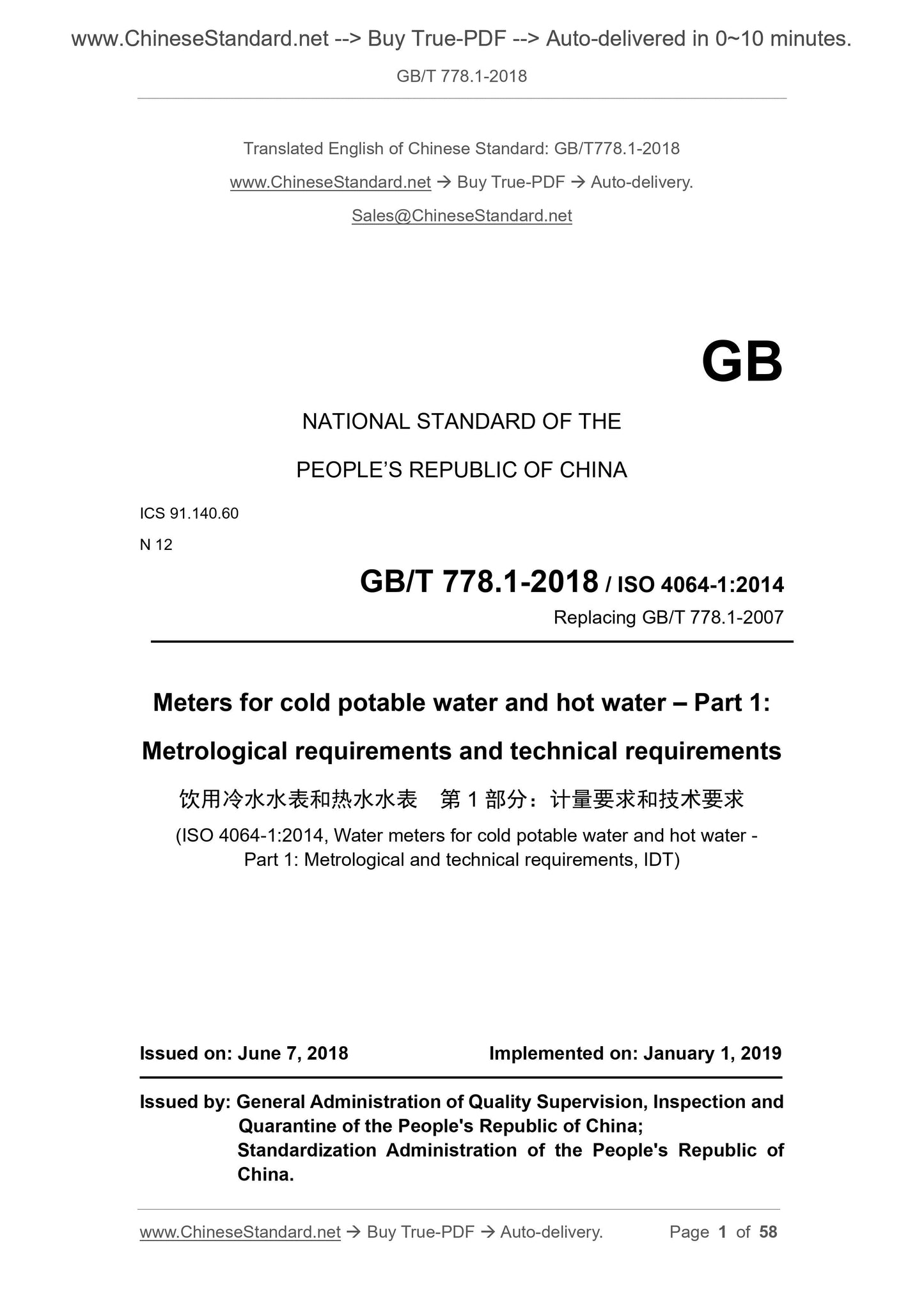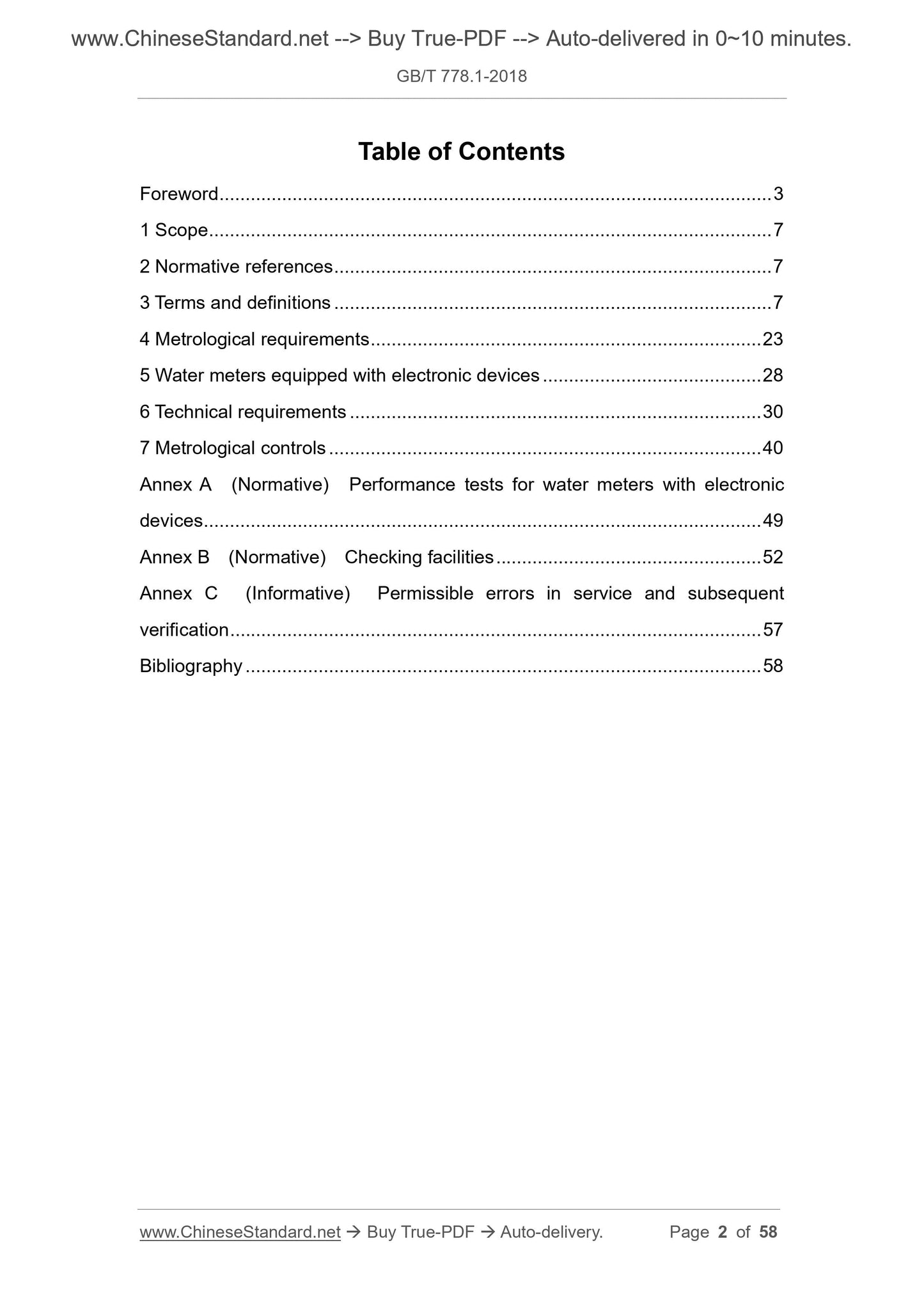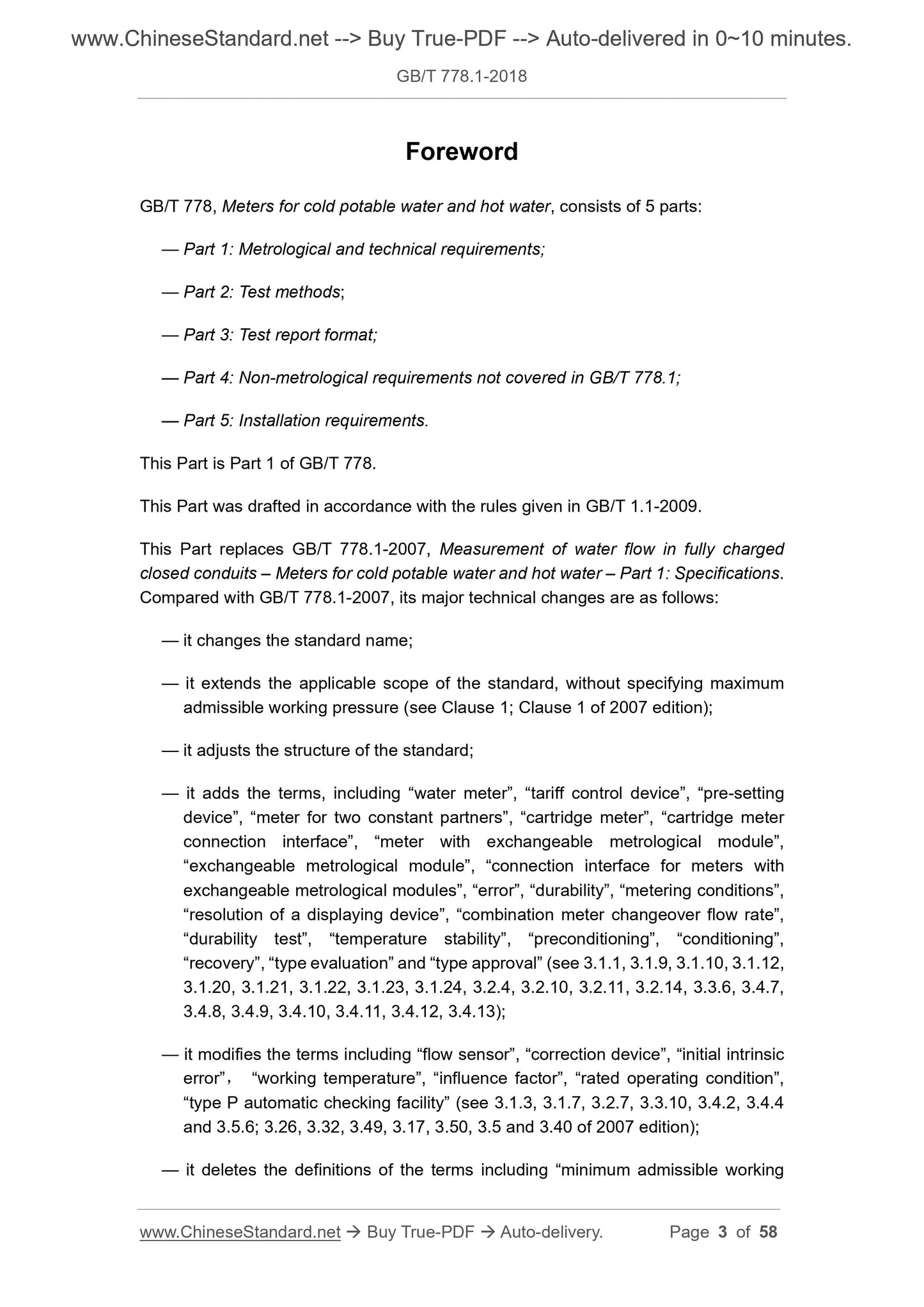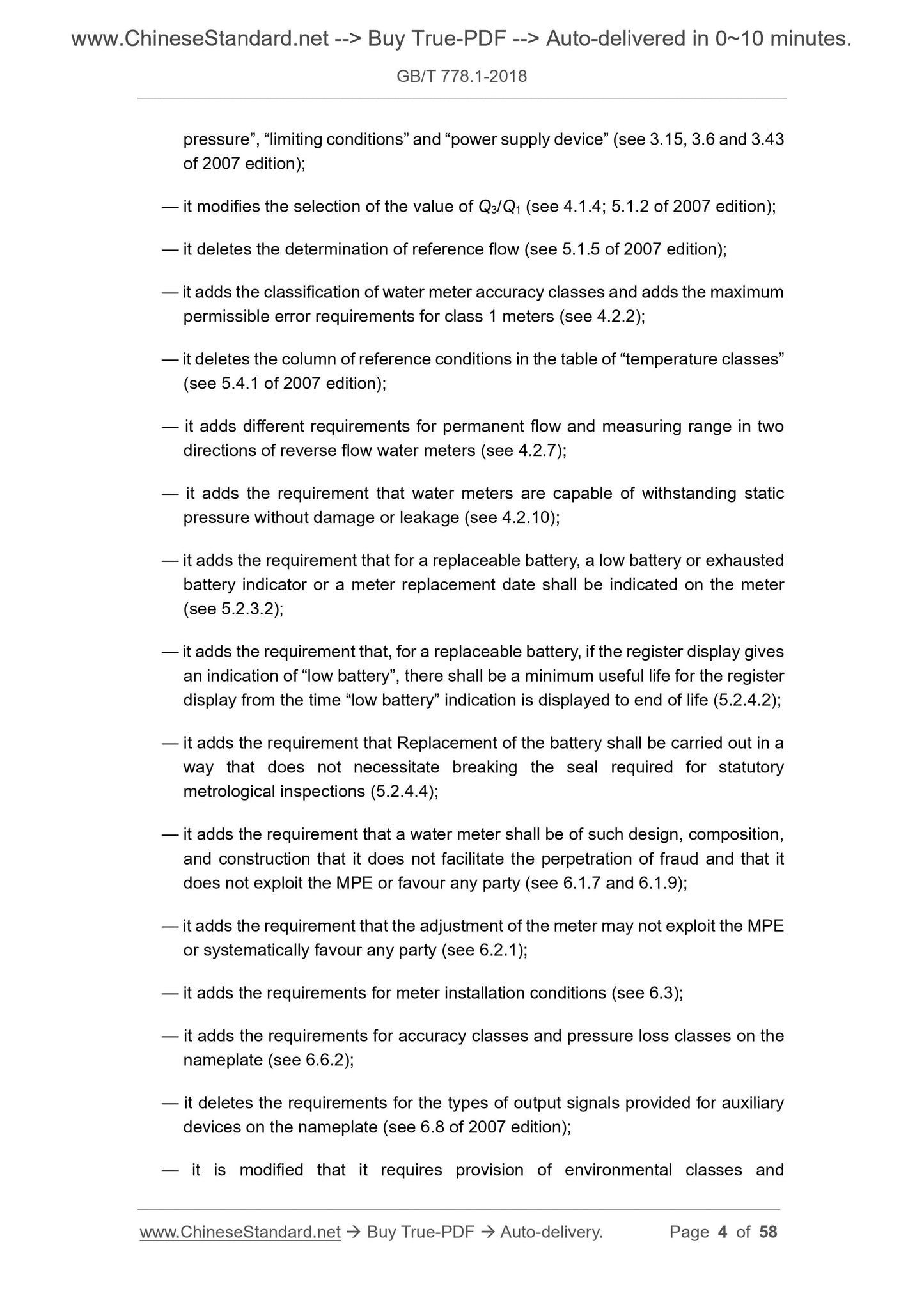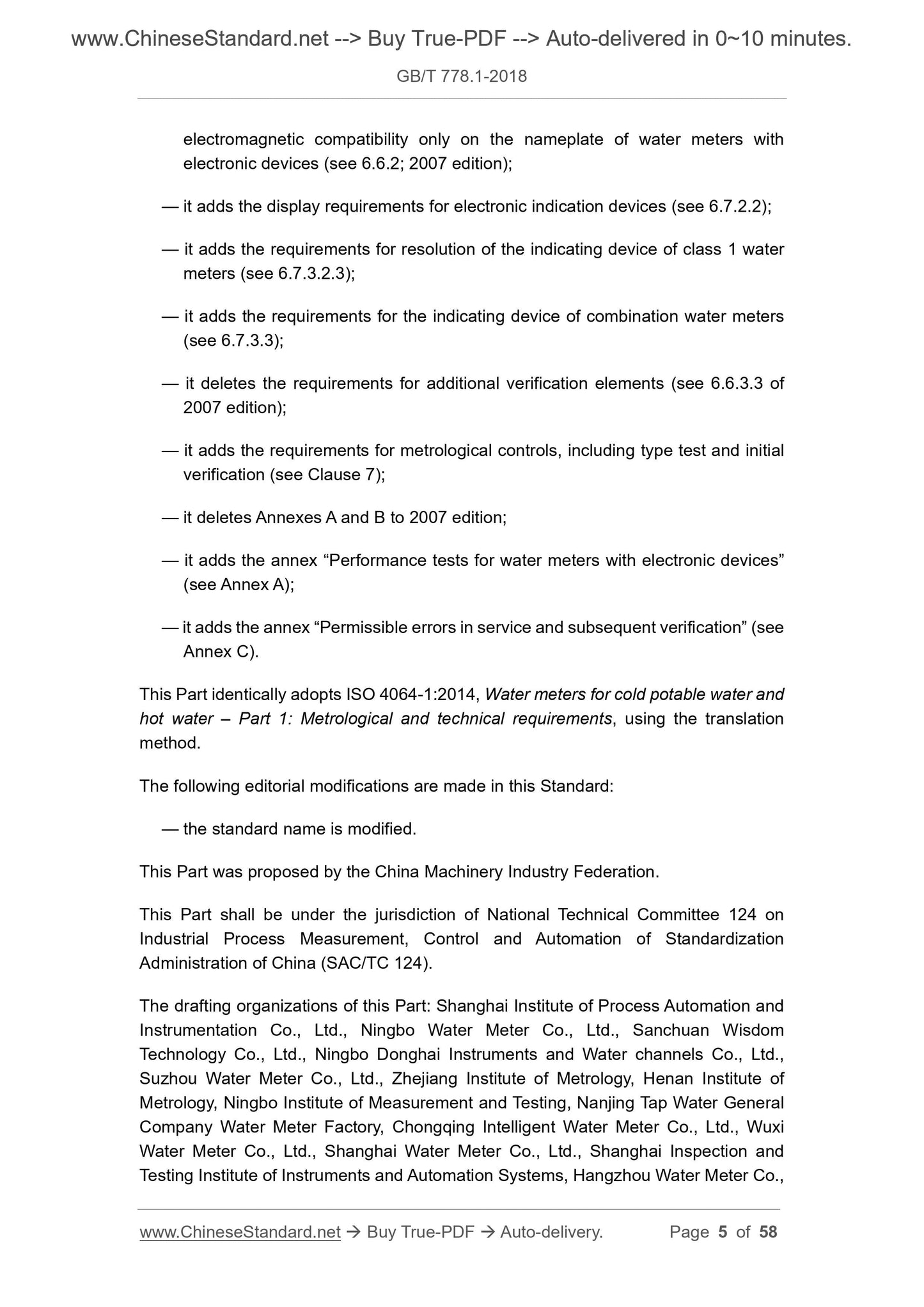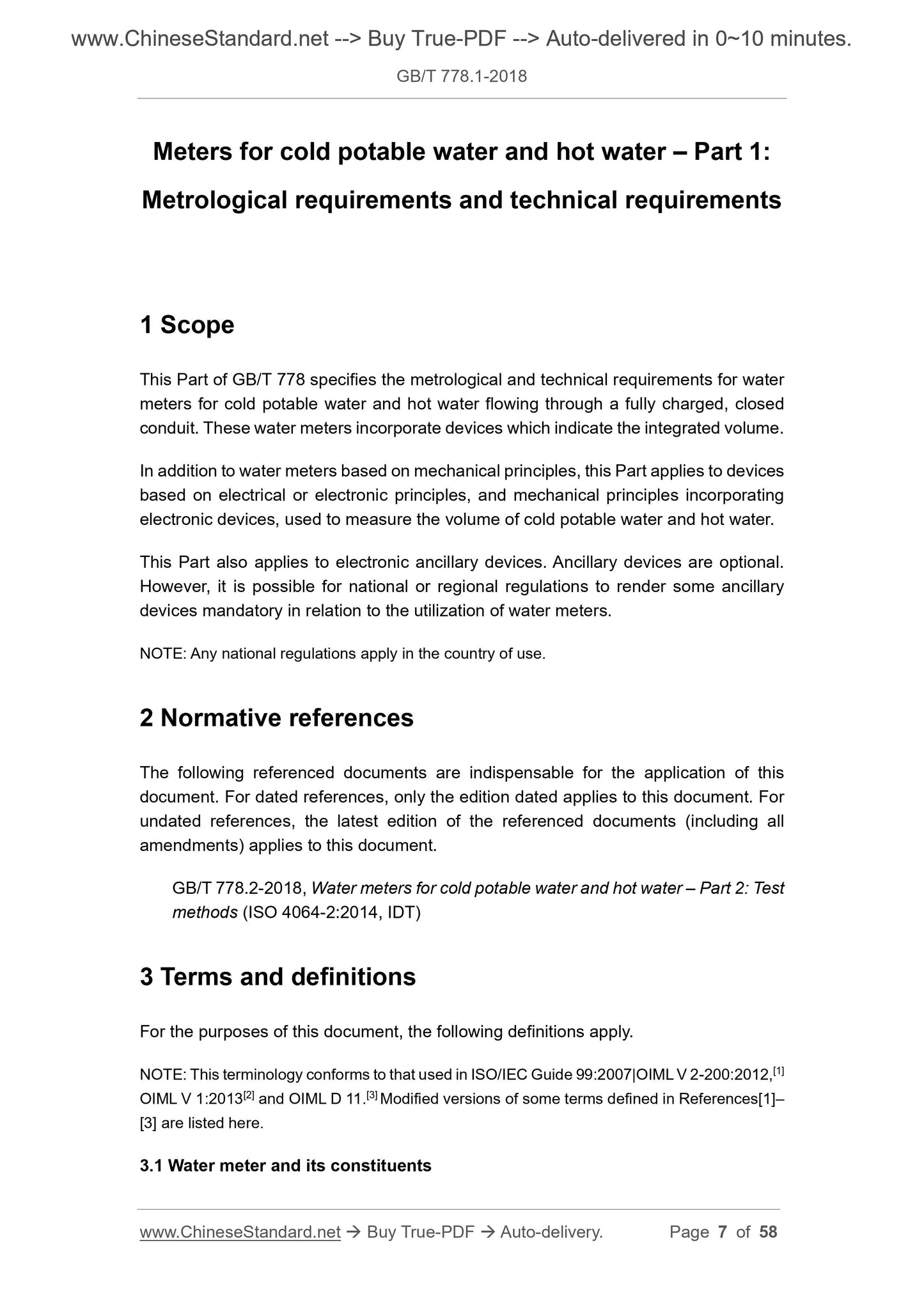1
/
of
6
www.ChineseStandard.us -- Field Test Asia Pte. Ltd.
GB/T 778.1-2018 English PDF (GB/T778.1-2018)
GB/T 778.1-2018 English PDF (GB/T778.1-2018)
Regular price
$150.00
Regular price
Sale price
$150.00
Unit price
/
per
Shipping calculated at checkout.
Couldn't load pickup availability
GB/T 778.1-2018: Meters for cold potable water and hot water -- Part 1: Metrological requirements and technical requirements
Delivery: 9 seconds. Download (and Email) true-PDF + Invoice.Get Quotation: Click GB/T 778.1-2018 (Self-service in 1-minute)
Newer / historical versions: GB/T 778.1-2018
Preview True-PDF
Scope
This Part of GB/T 778 specifies the metrological and technical requirements for watermeters for cold potable water and hot water flowing through a fully charged, closed
conduit. These water meters incorporate devices which indicate the integrated volume.
Basic Data
| Standard ID | GB/T 778.1-2018 (GB/T778.1-2018) |
| Description (Translated English) | Meters for cold potable water and hot water -- Part 1: Metrological requirements and technical requirements |
| Sector / Industry | National Standard (Recommended) |
| Classification of Chinese Standard | N12 |
| Classification of International Standard | 91.140.60 |
| Word Count Estimation | 34,383 |
| Date of Issue | 2018-06-07 |
| Date of Implementation | 2019-01-01 |
| Issuing agency(ies) | State Administration for Market Regulation, China National Standardization Administration |
Share
